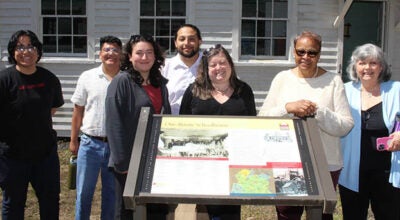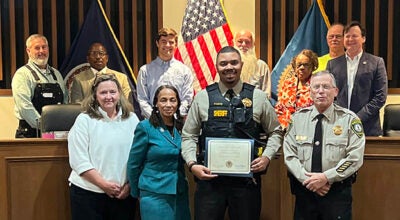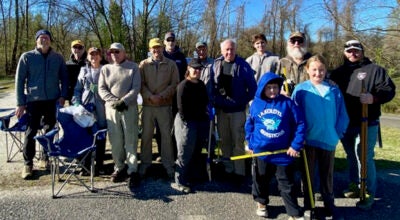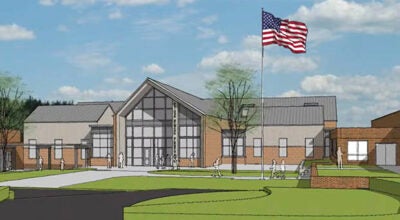Redistricting Plan Set
Published 4:04 pm Tuesday, April 5, 2011
CUMBERLAND – The Cumberland County Redistricting Committee decided on a recommendation, which was passed on to the Board of Supervisors during its public meeting on March 14.
The final redistricting recommendation to alter the boundary between Districts One and Two came out of a proposal consisting of three options that had been worked through by the Committee.
“I'd always heard of the 'one man, one vote' Constitution requirement and I think the option that meets that the best is option one,” advised Carter Harrison about the Committee's consensus on recommending option one to the County's Supervisors for approval. “I think option one meets the majority of the requirements that were put in place for us the best…”
The Committee's final decision was to recommend altering the boundary lines of Districts One and Two.
The reason the change was needed was because District One was smaller and District Two was quite a bit larger in population, County Attorney Howard Estes explained to the Committee.
“Swapping some of the census blocks between those two districts…District Two had an overage population factor and District One was under,” said Estes. “So moving those lines between One and Two made the most sense and it maintains the integrity of the other district lines as they are without making any other changes…”
According to the 2010 Census data, District One's population was 1,912 and District Two's population was 2,151.
The full standard deviation across all of the districts, according to Estes, is under 2.3 percent.
The redistricting resulted in District One's population being increased to 2,016 and District Two's population being decreased to 2,047, according to data presented by County Planner Andrew Sorrell.
The plan to recreate a majority/minority District Three did not pan out after spending time adjusting census blocks during a previous work session due to the simple fact that the district's population had “naturally” changed throughout the last ten years.
“They went in census blocks around the entire area of District Three looking for majority/minority census blocks not finding enough to really build on,” explained Estes about the process the Committee went through to try to recreate the majority/minority District Three that once existed. “We looked at switching district census blocks within District Three that were majority white districts and moving, corresponding with Districts Two and Three, to switch those populations around. And lastly, the Committee went to two census blocks around District Three looking for majority/minority census blocks and from the numbers that you see it has indicated that we were, as a Committee, unable to develop that majority/minority district in the truest sense…”
The Board of Supervisors public hearing on the redistricting plan is set for Tuesday, April 12.
After the Board's adoption of the recommended redistricting plan, it will then be sent on to the Department of Justice for review, according to Estes.
After the presentations, the Committee's public comment portion of the meeting was opened and there were no speakers signed up to address the proposals.
“I've been wrestling with 'leave it alone' or 'go with option one' and I think that it's pretty much been decided that option one is the better choice,” advised Supervisor and Committee member Bobby Oertel when the floor was opened up for suggestions from those involved in the process.
Next, Supervisor Tim Kennell, who also sits on the Committee, noted that the experience has been a new one for him and a lot of questions were raised throughout the process.
“I think a lot of effort was put into option two to see what was there and if something could be made of it and it just wasn't there…,” he said. “Option one is the option for me from my perspective.”
Committee Member Deana Lacy explained that the Committee “really didn't have major problems to solve” outside of District Two needing “minor tweaking” because of being above the desired deviation.
Before the meeting, the Committee had met on three different occasions-two of those meetings were held in the Commonwealth Regional Council's office to review the maps and census blocks on the software provided free of charge.
“Their mapping software allows us to change individual census block data elements from one district to another and update the map in real time in order to be able to save and determine to see if we are able to consistently meet the goal of having each district having the quality of population within the standard deviation…,” said Estes about obtaining the goal of having each district having a standard deviation of two percent or less.
Later, Supervisor Bill Osl thanked the CRC for the usage of that important software.
“The software-it was rapid return on the information as we moved it about,” he said. “It was well done…”
Carol Miller, committee member representing District Four, advised that she was also impressed with the software available by the CRC.
“I, too, would like to thank the CRC,” added Elbert Womack, supervisor for District Four and committee member. “We didn't have a hard problem to solve but the software made it easier…”
The Committee used “one man, one vote” as a goal throughout the process, Estes noted.
Other factors included are compactness of the districts, he said, the boundaries of the districts, preserving communities of interest and subdivisions, and looking at the incumbency factor by maintaining those residencies in the current districts, and the combines voting place for Districts Four and Five.
The overall three options that the Committee had to decide from included:
Option Three: Maintaining the current districts so that they were not changed.
Option Two: Recreating a majority/minority district for District Three. District Three, initially, in the 2000 census was a majority/minority district, roughly 57 percent was a black district, Estes noted, and the new census data showed that without changing any of the lines the District had “naturally” changed so that it was no longer a majority/minority district.
“One option would be to recreate that majority/minority district…,” Estes explained about the process the Committee went through to try to recreate the district but failed.
Option One: This was the option approved and that consisted of looking at the district with the smallest population and the district with the largest population and to alter those boundary lines. That resulted in Districts One and Two swapping several census blocks.
Supervisor Van Petty, who also sat on the Committee, explained that when he first started working on the Committee he thought that a majority/minority district had to remain in place.
“But, of course, our legal staff advised that it had to be to meet criteria and with the population shift you just can't create one to say you have one,” he said. “That was a learning thing for me because I was never aware of that.”





